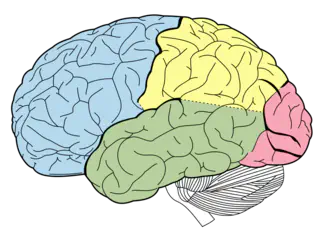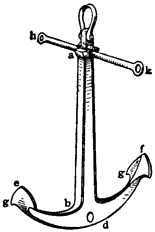10 Cognitive Biases That Plague A Trader
By Galen Woods ‐ 11 min read
A trader's edge is razor-thin and is easily eroded by cognitive biases. Learn about these 10 cognitive biases and how to avoid them in your trading.
Traders are humans. As humans, we are affected by cognitive biases. Being biased is not fatal, but it is an obstacle to your goal of trading successfully.
The bad news is that you will never entirely overcome your cognitive biases, as long as you stay human. The good news is that once you are aware of your cognitive biases, you can cut their effects and stand a better chance at becoming a successful trader.
If you research on the topic of cognitive bias, you will find dozens of biases. You will also see that many of them are related or are just slight variations of one another. It only shows that our brains are not easy to fathom at all.
Here, you will find ten cognitive biases that every technical trader can relate to.

1. Anchoring Bias
Definition
The anchor here is the first piece of information offered. This cognitive bias refers to giving too much weight to the anchor when we make our decisions.
As traders using technical analysis, who or what offers us the most information?
The market, of course. The market keeps offering us new information. Every price tick that comes in represents fresh information. We need to analyze new data. But are we anchored by the first piece of information?

A Trader’s Example
For instance, a trading session started off with a powerful bullish thrust. You were convinced that the session would be a bullish trend day. (Essentially, you were anchored to the information glimpsed from the “strong bullish thrust.”)
Although the market showed clear signs of exhaustion, you maintained that it was bullish.
As the session ended, you realized that you spent the day (and your trading capital) fighting the market. The fact is you were anchored by the first bullish thrust.
Lesson & Practice
The lesson is one that warns against stubbornness. Recognise what the market is telling you, now.
In practice, strike a balance.
Technical analysis requires us to look back in time for support and resistance to frame the current market. In this sense, it compels us to be anchored to past information.
Yet, we need to look at new observations continuously to follow the market flow.
To keep up this delicate balancing act, analyze historical data, but do not hold on to past conclusions.
2. Recency Bias
Definition
Our brains naturally put more weight on recent experience.
A Trader’s Example
In the market, this cognitive bias can manifest in over-learning from recent losses. We are more affected by recent losses. Thus, in trying to improve our trading results, we avoid trades that remind us of our recent losses.
For instance, you lost money in three recent pullback trades in a healthy trend. Hence, you concluded that pullback trading in a strong trend is a losing strategy. Then, you switched to trading range break-outs.
Due to your recent experience, you overlooked that most of your past profits came from pullback trades. By turning to trading range break-outs, you could be giving up a valuable edge in your trading style.
Lesson & Practice
Don’t learn from recent experience. Learn from your trading results over a more extended period.
Reviewing your trades and learning from them is crucial. However, in practice, we should not examine them and draw conclusions too often. We should make sure that we have a larger sample of trades across a longer period, before arriving at useful conclusions.
3. Confirmation Bias
Definition
We do not like people or information that contradicts our thoughts. We like them when they confirm what we think. Hence, we tend to place more weight on information that confirms our position.
This cognitive bias is insidious. As we give more weight to things that confirm our thoughts, we become more confident. As a result, we become less aware of the fact that we are affected by confirmation bias. This bias leads to a vicious cycle that ends in self-deception.
A Trader’s Example
You think that the market favors a long position, and you want to buy.
A new bullish bar prints on the chart. Yes, my bullish proposition is right. (Does not notice that the bullish bar has a small range.)
A bearish bar prints. Yes, this bar lacks momentum. The market is still bullish. (Does not notice that although it had a small range, it has a wider range than the preceding bearish bar.)
One more bearish bar follows, pushing against a support level. Yes, the support level is holding. Bullishness confirmed. Buy! (Does not notice that this bar closed below the support level with clear momentum.)
Because we are looking for confirmation, we lose sight of what the market is showing us.
Lesson & Practice
When you think that everything is confirming your market view, think again.
In practice, look for reasons against taking a trade and not for it.
When in doubt, ask yourself what kind of market development or price action might negate your view? If you cannot answer this question, you are affected by confirmation bias.
4. Post-Purchase Rationalisation
Definition
After buying something, we tend to rationalize and prove that our purchase is right.
This cognitive bias is especially pronounced for expensive purchases. The reason is that we tend to spend a significant amount of time and effort to research before deciding to buy big-ticket items. Hence, we do not want to admit that we purchased in bad judgment.
A trader’s most common purchase is getting into a trade position in the market.
A Trader’s Example
You waited patiently and observed intently. You refrained from taking sub-optimal trades, waiting for the one perfect trade that would make your day.
It arrived, and you took it without hesitation. You exhibited the hallmarks of a great trader. Patient, observant, discerning, and decisive.
But after getting into the long position, post-purchase rationalization crept in.
You placed considerable effort into finding this one good trade. Hence, you refused to accept that it might be a losing trade. Thus, you rationalized that the position was still good despite several warning signs. As a result, you gave up chances to exit with a small gain.
The market plummeted, and a small gain became a substantial loss.
Lesson & Practice
Don’t try to rationalize your trade while you are in it. You should have already justified your trade before you enter.
5. Bandwagon Effect
Definition
We do things because everyone else seems to be doing it, even when there are no good reasons for doing so.

A Trader’s Example
You heard everyone saying that the bull market will stop soon. The news, gurus, and forums are all bursting with negativity.
You looked at your charts with your technical analysis tools and found nothing bearish. You looked at more charts and found some bullish clues.
But because everyone was saying that the bull market would come to an end, you sold all your long positions.
The outcome of the market does not matter, whether it continued to rise or fall. You have already succumbed to the bandwagon bias because you follow the herd instead of your analysis.
Lesson & Practice
The best traders are often lonely, because they listen to their own analysis, and ignore the voices of the masses.
You might think that to avoid the bandwagon, you must adopt a contrarian mindset and always go against the herd. That is not the case.
The masses might be right, or they might be wrong. But you are probably wrong when you think that something is right only because everyone seems to say so.
I find that the best way to avoid the bandwagon is to stand so far away from it that you cannot jump onto it. This is why I never read market commentaries or listen to market news when I trade.
6. Loss-Aversion
Definition
We don’t want to be losers. We would rather win less than to lose.
A Trader’s Example
- You are in a long position.
- The market rises.
- You quickly move your stop-loss order to break even.
Wait a minute. Why did you do that?
Is it because the price action has a bearish tone? Or is it solely because you do not want to lose?
If it is the latter, you have fallen prey to loss-aversion. You would rather scratch the trade than to stay in the market to enjoy probable profits.
Lesson & Practice
Looking at losses in a different light is essential for a trader.
Losses are merely the cost of doing business. It is like paying your supplier for goods, before selling them. A trader who does not want to lose is as absurd as a retailer that does not want to stock up on products to sell. (Let’s not talk about drop-shipping. If that’s your game, you want to be a broker and not a trader.)
Stop using break-even stops. It makes you feel good. It really does. But it is often not the best course of action, given the market context.
7. Attribution Bias
Definition
When things go well, it is because of me. When things go south, it is definitely not me.
A Trader’s Example
After a fantastic trade with a nice profit, you start to feel like a genius, thinking that your trading skills made it possible.
After a losing trade, you blame your broker, your computer, and your chair.
Lesson & Practice
Take credit for the right things. Take credit for following your rules, and not for your profitable trades. Take credit for your consistent profits over a large sample, and not for a single profitable trade.
Assume responsibility for everything, including your losses. As an independent trader, you do not shift blame because it does not help you progress.
What does help?
Taking responsibility to find out what went wrong. And doing what is needed to improve.
8. Illusion of Control
Definition
This cognitive bias makes us think we can control events when we really can’t,
A Trader’s Example
You think that you can control if your next trade is profitable. Everything is under control. You will make money on your subsequent trade because it’s all under control.
Thinking that you can control the outcome of your next trade, is the same as believing that you control the market. You clearly don’t.
Lesson & Practice
The illusion of control is hugely relevant to traders.
Recognising that we have no control over the market is the first step towards managing our risk. Do not seek certainty and control. Seek to be comfortable in uncertain situations beyond our control.
Hence, focus on controlling what we can control. Our actions and emotions. Focus on honing your discipline, because our mind is the only thing we can ever dream of controlling.
9. Hindsight Bias
Definition
“Yes, I knew it all along.” (No, you don’t)

A Trader’s Example
You looked at a historical chart and started explaining the chart patterns that led to the bull market. You sound like you were making sense. You convinced yourself that you were making sense, and you would catch the next bull market.
When the next bull market came, you didn’t even notice.
Lesson & Practice
The hindsight bias is difficult to overcome. Our best shot at it is to keep excellent records of our trading activities.
10. Bias Blind Spot
Definition
You see that other people are biased, but do not realize your own cognitive biases.
A Trader’s Example
After reading an article on cognitive biases (like this one you are reading now), you watched your friend trade.
In your mind, you thought that he was wrong to do this. That’s the loss-aversion bias. Oh, he was biased again in exiting the market.
The chances are that when you review your own trading decisions, you will find fewer biased decisions. This is not because you are not biased.
But because you are affected by the bias blind spot.
Lesson in Practice
To find your own cognitive biases, get someone else’s opinions. We all have blind spots when we look at ourselves.
I am ending with this cognitive bias to remind you to think beyond this article. And to remind myself that although I can point out cognitive biases of others, I might not be aware of my own biases.
Awareness of Cognitive Biases Helps
Once we are aware of these cognitive biases, we stand a better chance of overcoming them in our trading.
Note that this list of cognitive bias and the examples are not exhaustive. There are dozens of flavors of cognitive biases out there. Don’t feel overwhelmed. It is not a trader’s job to learn how to label cognitive biases. Our job is to ground our decisions in robust and consistent analyses, reducing the effect of one bias at a time.
Do not try to get rid of cognitive biases entirely.
Why?
First, because it is not possible.
Second, because it is not necessary.
Ultimately, you should aim to cut the effect of cognitive biases on our trading activities to achieve market success.
Are you mired in confusing trading perspectives? Ground yourself with a clear and consistent trading framework.
